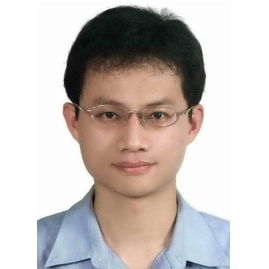Active, Tunable and Reconfigurable Elastic Metamaterials
A special issue of Crystals (ISSN 2073-4352). This special issue belongs to the section "Inorganic Crystalline Materials".
Deadline for manuscript submissions: closed (30 November 2022) | Viewed by 15769
Special Issue Editors
Interests: metamaterials; phononic crystals; fiber Bragg gratings (FBGs)
Special Issues, Collections and Topics in MDPI journals
Interests: wave propagation; phononic crystals; acoustic metamaterials
Special Issue Information
Dear Colleagues,
Elastic metamaterials are artificial composite structures exhibiting extraordinary properties and functionalities, which provide a fascinating and novel way to control, guide, or cloak elastic waves. Metamaterials with tunable, reconfigurable, or programmable properties are gaining more and more attention due to their wide-ranging applicability on demand. The target of tunability and reconfigurability is to manipulate elastic waves, switch between different states, and adapt to different circumstances; several approaches such as combining origamis have been proposed to realize this purpose. Additionally, metamaterials containing active devices can achieve on-demand functionalities by breaking the inherent restrictions of passive metamaterials. Metasurfaces, also known as planar metamaterials, have recently been developed to manipulate wavefronts by abruptly shifting the phase. Active, tunable, and reconfigurable metasurfaces is also a highly active research area at present. Furthermore, combined with topological metamaterials, such as Willis metamaterials, many new exciting studies will emerge in the area of active, tunable, and reconfigurable elastic metamaterials and metasurfaces. These studies will promote the design and applications of multi-functional elastic metamaterials.
Dr. Kuo-Chih Chuang
Dr. Yanfeng Wang
Dr. Yongquan Liu
Guest Editors
Manuscript Submission Information
Manuscripts should be submitted online at www.mdpi.com by registering and logging in to this website. Once you are registered, click here to go to the submission form. Manuscripts can be submitted until the deadline. All submissions that pass pre-check are peer-reviewed. Accepted papers will be published continuously in the journal (as soon as accepted) and will be listed together on the special issue website. Research articles, review articles as well as short communications are invited. For planned papers, a title and short abstract (about 100 words) can be sent to the Editorial Office for announcement on this website.
Submitted manuscripts should not have been published previously, nor be under consideration for publication elsewhere (except conference proceedings papers). All manuscripts are thoroughly refereed through a single-blind peer-review process. A guide for authors and other relevant information for submission of manuscripts is available on the Instructions for Authors page. Crystals is an international peer-reviewed open access monthly journal published by MDPI.
Please visit the Instructions for Authors page before submitting a manuscript. The Article Processing Charge (APC) for publication in this open access journal is 2600 CHF (Swiss Francs). Submitted papers should be well formatted and use good English. Authors may use MDPI's English editing service prior to publication or during author revisions.
Keywords
- active metamaterials
- origami metamaterials
- tunable metamaterials
- reconfigurable metamaterials
- piezoelectric metamaterials
- programmable metamaterials
- tunable metasurfaces
- reconfigurable metasurfaces
- active metasurfaces
- programmable metasurfaces







